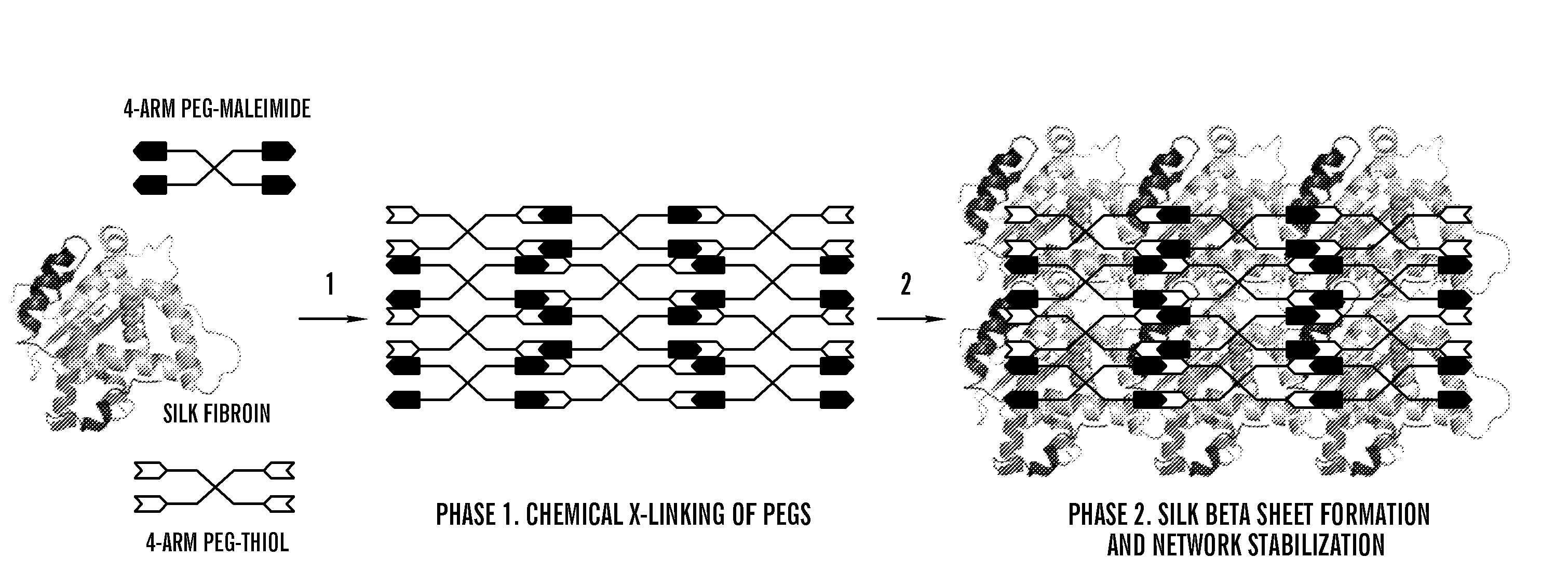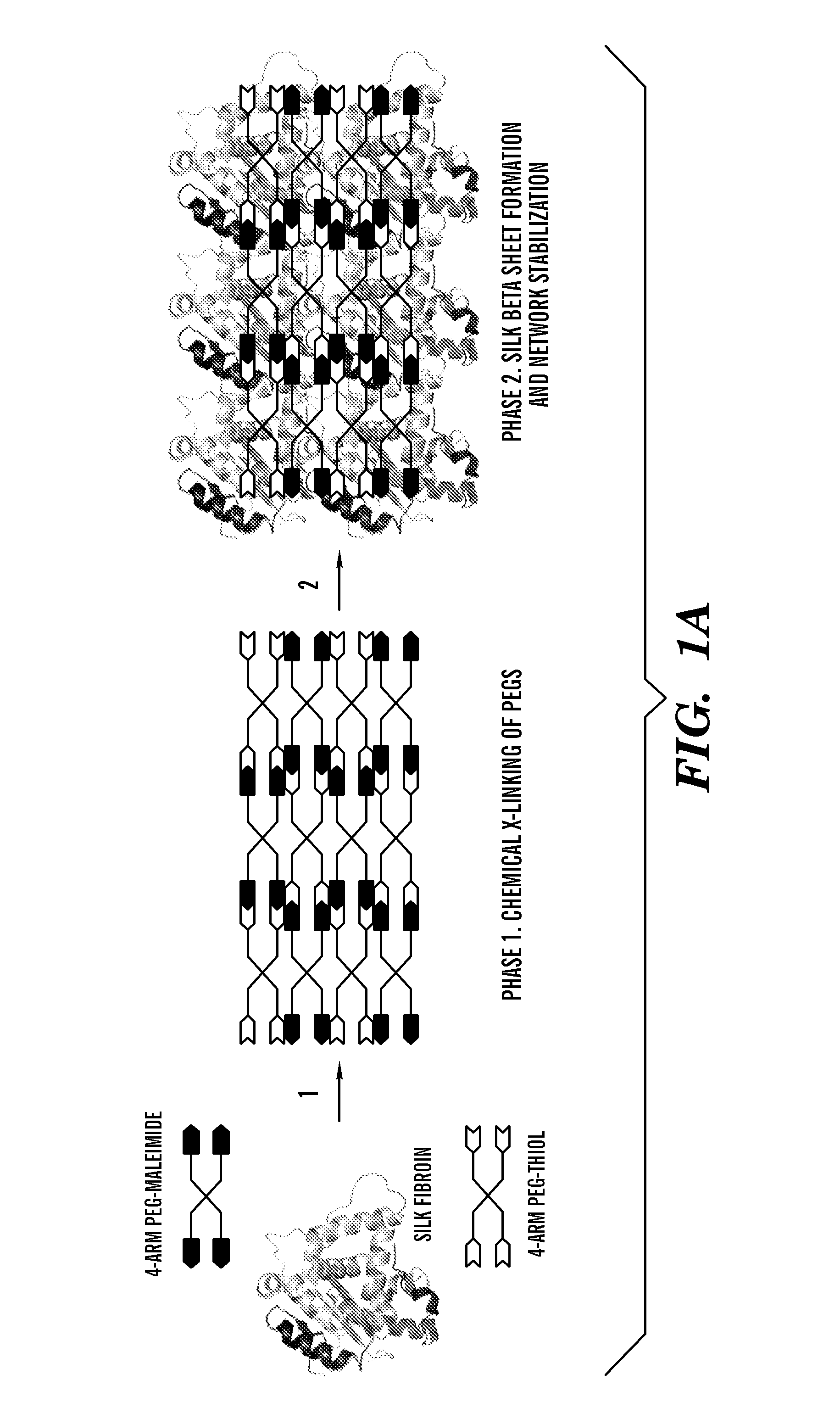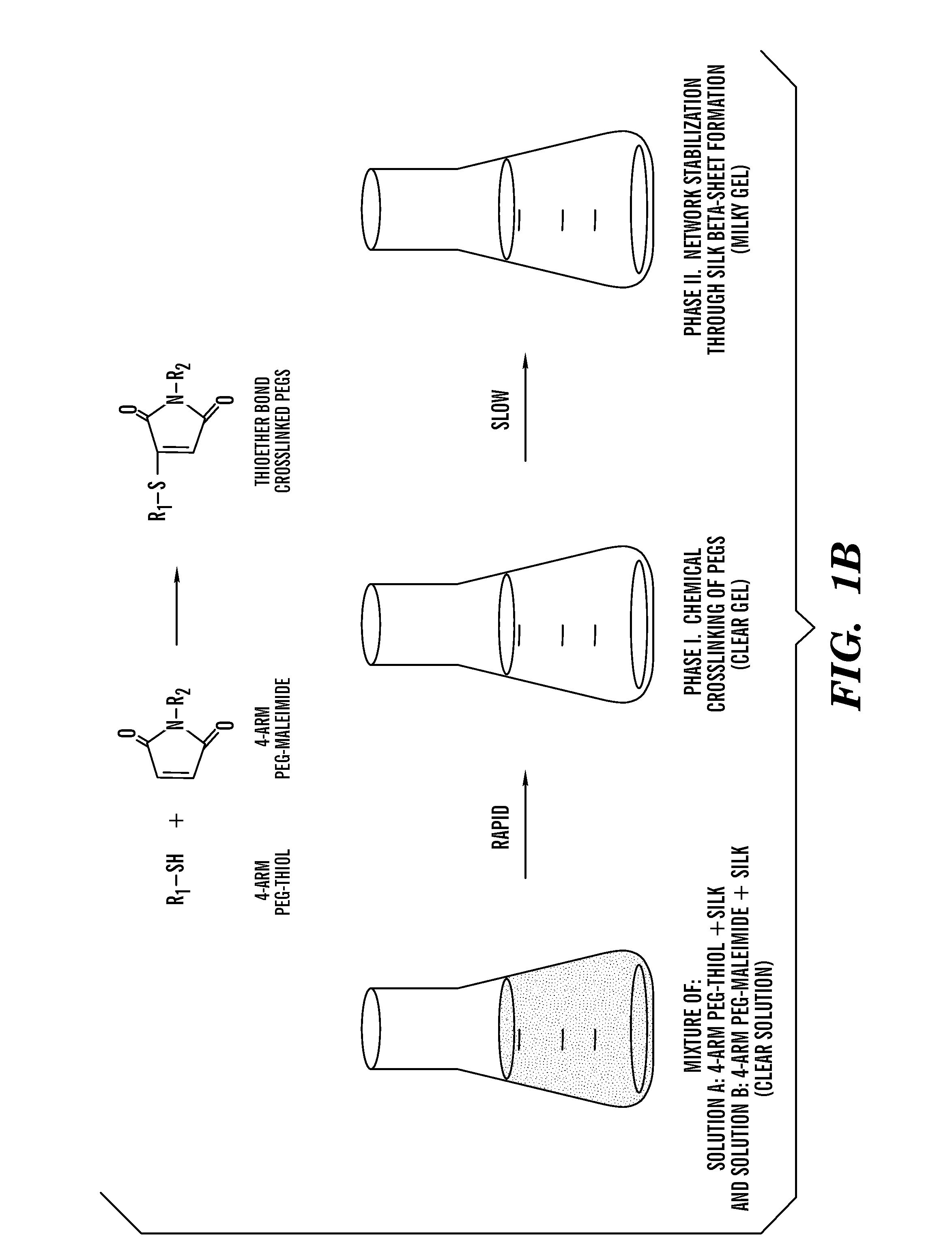Silk fibroin and polyethylene glycol-based biomaterials
a biomaterial and polyethylene glycol technology, applied in the field of preparation, can solve the problems of limited applicability at pressure sensitive areas, unable to control bleeding in the operating room, and unable to meet the requirements of toxicity,
- Summary
- Abstract
- Description
- Claims
- Application Information
AI Technical Summary
Benefits of technology
Problems solved by technology
Method used
Image
Examples
example 1
Exemplary Materials and Methods
[0186]Materials:
[0187]The four-arm polyethylene glycol maleimide (4-arm PEG-maleimide) and four-arm polyethylene glycol thiol (4-arm PEG-SH) were purchased from Nanocs Inc., New York, N.Y. Silk worm cocoons were obtained from School of Materials Engineering, Soochow University, Suzhou, China.
[0188]Preparation of Silk Fibroin Solution:
[0189]Silk fibroin aqueous solution was obtained as previously described. See Sofia et al., 54 J. Biomed. Mater. Res. 139-48 (2001). Briefly, Bombyx mori cocoons were cleaned and cut into small pieces. In a subsequent degumming process, sericin, a water-soluble glycoprotein bound to raw silk fibroin filaments, was removed from the silk strands by boiling Bombyx mori cocoons in a 0.2 M aqueous solution of Na2CO3 for 30 minutes to 60 minutes. The silk fibroin was then dissolved in a 9 M LiBr solution at 60° C. for 1 hr to generate a 20% (w / v) silk fibroin solution. The solution was dialyzed in Slide-A-Lyzer® 3500 MWCO dialys...
example 2
Gel Formation and Beta-Sheet Content Determination
[0208]Various formulations for silk-PEGs based hydrogel were obtained as described in Table 1 or 2. A two-step gelation process can occur to form the crosslinked polymer matrix, as shown in FIG. 1A or 1B. The first phase can involve rapid gel formation via chemical reaction between the two PEGs. This step was confirmed by gel formation within seconds upon mixing two samples each containing 4-arm PEG-SH and 4-arm PEG-maleimide, respectively, and this step of gel formation occurred in the presence or absence of silk in the samples (Vanderhooft et al., 8 Biomacromolecules 2883-89 (2007)) (inset of FIG. 2).
[0209]To assess the beta-sheet formation of silk in the blended PEG formulations, control (PEGs only) and silk-containing (10% silk-PEGs) samples were treated with ethanol (known as an exogenous accelerator to induce beta-sheet formation) and monitored by FTIR, using the control sample as background. The appearance of the characteristi...
example 3
Biocompatibility of the Silk-PEGs Based Biomaterials
[0210]The biocompatibility of the silk-PEGs crosslinked polymer matrix was assessed by casting the silk-PEGs gels and seeding them with cells without prior washing. Such experimental conditions can closely mimic situations where the different components (silk, different PEG components) in the matrix-forming composition would crosslink in vivo without additional washing steps. Primary cervical fibroblasts cultured for 48 hours on the control sample and silk-PEGs samples showed high viability but displayed a rounded morphology on both materials, consistent with published data on silk matrix (Sofia et al., 2001) (FIGS. 3A-3B). This morphology can be explained by, for example, lack of cell-specific attachment sites on the polymer matrix. Such property of the materials can be used for surgical cytoadherence prevention and scar tissue formation prevention in vivo. As shown in FIGS. 3A-3B, the overall cell number on both the control sampl...
PUM
| Property | Measurement | Unit |
|---|---|---|
| pH | aaaaa | aaaaa |
| pH | aaaaa | aaaaa |
| pH | aaaaa | aaaaa |
Abstract
Description
Claims
Application Information
 Login to View More
Login to View More - R&D
- Intellectual Property
- Life Sciences
- Materials
- Tech Scout
- Unparalleled Data Quality
- Higher Quality Content
- 60% Fewer Hallucinations
Browse by: Latest US Patents, China's latest patents, Technical Efficacy Thesaurus, Application Domain, Technology Topic, Popular Technical Reports.
© 2025 PatSnap. All rights reserved.Legal|Privacy policy|Modern Slavery Act Transparency Statement|Sitemap|About US| Contact US: help@patsnap.com



